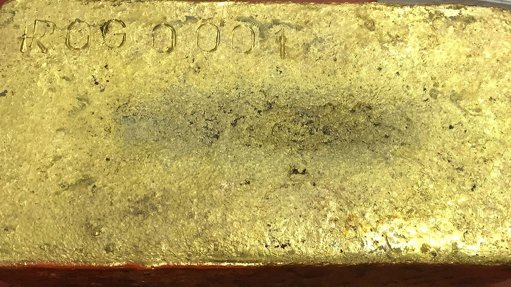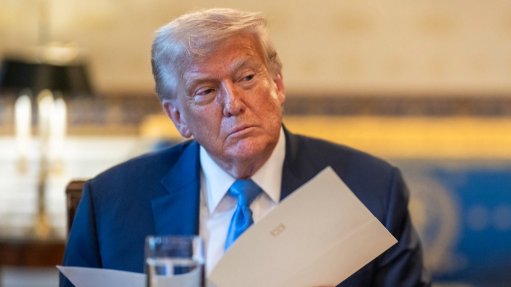On-The-Air (21/01/2022)
Every Friday, SAfm’s radio anchor Sakina Kamwendo speaks to Martin Creamer, publishing editor of Engineering News & Mining Weekly. Reported here is this Friday’s At the Coalface transcript:
Kamwendo: We can achieve “superpower” energy status by focusing on our world-beating solar, wind and storage opportunity.
Creamer: It is all about SWS – solar, wind and storage. South Africa hasn’t got the greatest sun. There are other countries that can beat us. We haven’t got the greatest wind. There are other countries that can beat us on that when we stand alone. But if you put our sunshine and our wind together and if you match them and if we look at what and when is the greatest need is, and when you look at when the least need is. You work it all out seasonally and you cater for the worst-case scenario, and you create capacity for that, storage capacity, South Africa can be an energy superpower second to none.
This is what the calculations show – that we have to have an integrated resource plan that is exclusively SWS – solar, wind and storage. Our last official integrated resource plan was what we call the IRP2019. We have to change that plan and make an exclusively solar, wind and storage plan, and go for that worst case scenario as storage. We will end up with a price for electricity that they calculated which is mouth-watering, $0.03 cents per kilowatt hour, and this is clean energy. I am thinking of some of the big smelters, some of the big companies that need clean energy. I think of Hillside Aluminium. Half of aluminium is electricity.
Hillside Aluminium, in Richards Bay, has got high carbon electricity going into its aluminium. What is the world saying? We don’t want your aluminium, because it is made of dirty energy. There are massive implications if we do not clean up our energy. The great news is that we can really be the best in the world if we just combine the solar and the wind and the storage, very cleverly. The calculation is that we would only need 8 hours of storage because of our good situation here. If you go to a place like California, they need 39 hours of storage. We are really in a good position to make sure that if we use solar power and wind power in our integrated resource plan, we could be world beaters.
Kamwendo: Australians are the main investors in projects that are bringing dormant gold and copper assets back to life.
Creamer: This is very interesting. People sitting in Sydney and Perth can see opportunities in South Africa better than we can. People in South Africa don’t see the opportunities that they see, and if we do, we can’t find funding to realise those opportrunities. We have a situation in the Johannesburg Stock Exchange now that if you are not big and beautiful you are not going to get money. Whereas in Australia and Canada and even in the UK, on the London Stock Exchange’s AIM, people are raising money there that they can’t raise here.
Again, we have got the situation where with copper, down at Prieska, in the Northern Cape, they are now looking at really speeding up copper production. But where does the funding come from? It starts off in Australia. Looking at West Wits Mining, which will revive gold mining right next door here, close to Roodepoort. They are already doing it and have found a treasure chest of gold there that they didn’t know existed, because the mine is so old they didn’t realise that there would be piles with gold in them.
Only when they got underground did they see this. That sort of thing is happening and creating it all are people outside the country, because when you go to the Johannesburg Stock Exchange, and you want to try and introduce an exploration company or a small mining company, big investors say it is too small to be funded. The biggest investors here are institutional. You look at the group of investors about 17 of them, they are big, the Old Mutuals, the Sanlams. They are part of a group called ASISA.
They control about R7-trillion to to R9-trillion worth of South African savings, but their rules are so strict that they can’t come in as investors for these small companies, even though some of these small companies have come in with Canadian money and Australian and other money and done extremely well. One is up 400%. If you had put R1 in, it is now R400. It is really an opportunity that we South Africans are losing out on. The foreigners are actually investing. As we see, they have got more insight into our country and far better funding systems, than we have – and I think that has to change.
Kamwendo: Soweto-born Sam Molefi has clinched promising business for his impressive contract mining business.
Creamer: I just spoke to Sam Molefi a few minutes ago. This is a man that was born in Dobsonville, Soweto. He studied at Wits Tech. He became a mining engineer. His father worked at Crown Mines. Guess what? He has now been appointed the mining contractor for a mine just next to Crown Mines where his father was, that is being revived.
Our Witwatersrand Gold Basin has had a reputation of being the richest in the world. Of course, the big companies have mined it. They go for millions of ounces, but when it comes to smaller volumes, they are not interested. Sam Molefi has been given this great opportunity to be the contract miner at West Wits Mining’s gold project, and he is playing a massive role. Guess who the investor is? Again Australians. West Wits Mining is reviving dormant gold mines in our big gold basin and giving work to a Dobsonville-born entrepreneur, who has created a great business. He has got equipment worth R190-million and he is rolling out R8-million worth of it on the West Rand. And this is by no means the only project but he was able to clinch this because he was able to get going with his know-how and he is looking forward to employing 700 people. This is what we need.
These are the things that he is passionate about – creating employment. He is so happy to get local people in and that is what he is doing. If you go out to that old Rand Leases gold mining area, on the way to Roodepoort, that closed 20-years ago, just west of Johannesburg, you can see it being revived. Who is doing it? Sam Molefi, the Dobsonville-born Soweto entrepreneur.
Kamwendo: Thanks very much. Martin Creamer is publishing editor of Engineering News & Mining Weekly.
Article Enquiry
Email Article
Save Article
Feedback
To advertise email advertising@creamermedia.co.za or click here
Announcements
What's On
Subscribe to improve your user experience...
Option 1 (equivalent of R125 a month):
Receive a weekly copy of Creamer Media's Engineering News & Mining Weekly magazine
(print copy for those in South Africa and e-magazine for those outside of South Africa)
Receive daily email newsletters
Access to full search results
Access archive of magazine back copies
Access to Projects in Progress
Access to ONE Research Report of your choice in PDF format
Option 2 (equivalent of R375 a month):
All benefits from Option 1
PLUS
Access to Creamer Media's Research Channel Africa for ALL Research Reports, in PDF format, on various industrial and mining sectors
including Electricity; Water; Energy Transition; Hydrogen; Roads, Rail and Ports; Coal; Gold; Platinum; Battery Metals; etc.
Already a subscriber?
Forgotten your password?
Receive weekly copy of Creamer Media's Engineering News & Mining Weekly magazine (print copy for those in South Africa and e-magazine for those outside of South Africa)
➕
Recieve daily email newsletters
➕
Access to full search results
➕
Access archive of magazine back copies
➕
Access to Projects in Progress
➕
Access to ONE Research Report of your choice in PDF format
RESEARCH CHANNEL AFRICA
R4500 (equivalent of R375 a month)
SUBSCRIBEAll benefits from Option 1
➕
Access to Creamer Media's Research Channel Africa for ALL Research Reports on various industrial and mining sectors, in PDF format, including on:
Electricity
➕
Water
➕
Energy Transition
➕
Hydrogen
➕
Roads, Rail and Ports
➕
Coal
➕
Gold
➕
Platinum
➕
Battery Metals
➕
etc.
Receive all benefits from Option 1 or Option 2 delivered to numerous people at your company
➕
Multiple User names and Passwords for simultaneous log-ins
➕
Intranet integration access to all in your organisation




















